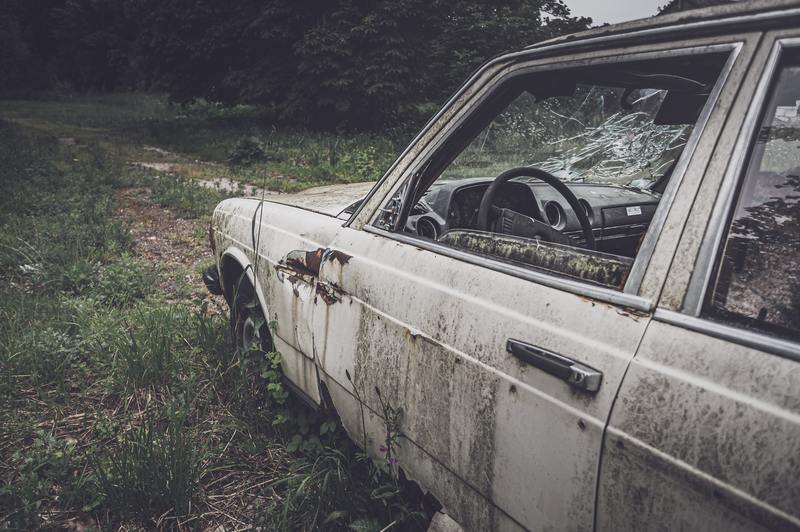Are you looking up “how to fix a water damaged car?” Was your vehicle recently damaged in your city due to a flood? Or was your car recently harmed by water that wasn’t caused by a flood?
In any case, you should be aware of the subsequent measures to take with your vehicle. If you wish to keep your water-damaged vehicle, you should also be mindful of the flooded auto repair cost and be prepared to pay it. Here’s everything you need to know about flooded cars and will your auto insurance cover the repair cost.

What Is A Water-Damaged Car?
We’ll talk about the repair and insurance coverage of flooded automobiles in a few minutes and if it’ll be worth it for you. First, we want to make sure you understand what we’re talking about when we tackle flooded cars.
Flooded cars, as the name implies, are vehicles that have been flooded in some way. Flooding can take many various forms (which we’ll go into in a minute). On the other hand, a flooded car is any vehicle that has taken on water at any point.
In rare circumstances, the water may have risen just high enough to allow entry into the car. In some cases, the vehicle may have been entirely immersed underwater.
Uneconomical water-damaged car repair
When a storm surge or river flooding hits, cars may be stranded for days or weeks as the water saturates everything. The interior, electronics, and motor of your vehicle may be seriously harmed as a result.
The worst damage to autos is caused by saltwater inundation, even if it is just minor. Some experts believe that a modern car that has been flooded with salt water is unfixable at any level. You should avoid repairing saltwater or long-term flooded cars, unless you are willing to rebuild them entirely.
Economical water-damaged car repair
The magnitude of the flooding, type of water, depth, and submersion time all influence your restoration possibilities. Because freshwater is less corrosive than salt water, you might be able to restore an automobile that a river has flooded.
Repairing Your Water Damaged Car
Step #1. If an engine has been flooded, do not attempt to start it. A hydro-locked engine will swiftly destroy itself if it even starts.
Water got into the crankcase if the oil level was excessively high because oil floats on water, rendering it ineffective as a lubricant. To drive water out of the cylinders, remove the spark plugs and crank the engine over by hand.
Compressed air is blown into the spark plug openings, and intake is also beneficial. Make sure the oil is drained, and the oil filter is replaced.
Step #2. Check the levels of transmission fluid and the transfer case and differentials, as these may have been flooded as well. In water, automatic transmission discs and bands delaminate.
Lack of lubrication can destroy manual transmission synchronizers, and a wet clutch can rust the flywheel. It can alleviate transmission difficulties by draining and replacing all fluids, and the clutch may release once the engine reaches operating temperature.
Step #3. Pay careful attention to safety systems, such as brake fluid that has been polluted with water or power steering fluid that has been contaminated with water. For example, water-logged brake fluid can evaporate, resulting in a reduction of braking power.
You should flush brake and power steering systems. Brake pads and shoes can cause rotors and drums to rust, although moving the automobile might help loosen them up.
Step #4. Remove the seats, carpets, and insulation from the automobile to dry it out properly. Leave the car outside on a sunny day with open doors and windows.
Make sure everything is out in the sun — including the trunk. Disconnect any electrical connectors and use a hair drier or a heat gun to dry them out.
Step #5. It will depend mainly on the extent of the flooding, you may need to drain the fuel tank to avoid contamination.
Will your auto insurance cover the water-damaged car repair cost?
One of the other things you should do when your automobile has been flooded is contacting your auto insurance carrier and discuss with a lawyer to determine if the flood damage is covered.
The water damage may or may not be covered by your insurance carrier, depending on the type of car insurance policy you have. When you call to make a claim, they will be able to tell you whether or not you have coverage.
After inspecting your vehicle, your auto insurance provider will be able to tell you whether or not they will pay to have it repaired. Car insurance companies frequently immediately total cars that have been flooded.
Conclusion
Repairing flood damage is, in general, a risky business. Time is of the essence; drying out your car as quickly as possible will offer you the best chance of resurrecting it. Not everyone has the skill on how to fix a water damaged car, so make sure to contact an automobile repair professional if you’re having a hard time.
